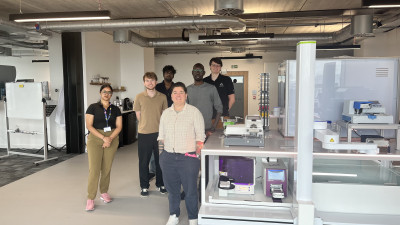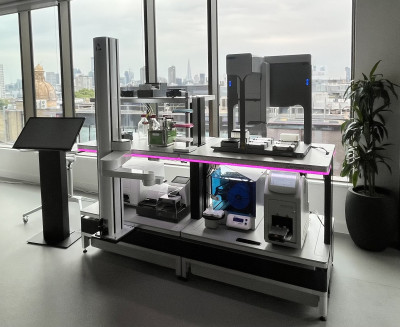News
Robotics students 'lunch and learn' at Automata Technologies
30 July 2025


A group of enthusiastic Advanced Robotics MSc students organised a 'lunch and learn' visit to the headquarters of Automata Technologies in London.
Senior Application Scientist Alice Tome-Fernandez led the session, taking the students through the company's history and activities since its inception.
Alice highlighted the company's collaboration with the University Hospital Southampton NHS Foundation Trust in 2021, to speed up testing for COVID-19, which was pivotal to the start of their robotic product.
The company is heavily invested in software development and is currently focused on bench-top automation. They have automated the manual process of moving and placing lab equipment, which is connected both physically and digitally. Their benches are designed to be human-centric and can integrate with any instrument that has an accessible API.
Matis Requis, Senior Solutions Engineer, presented the system's transport layer.
The original LINQ system (V1) used magnetism to move racks across a glass surface, with magnets operating from beneath the glass. In the new transport system, Maglev technology is used on a track, achieving significantly higher speeds of up to 5 m/s. To balance performance with cost, the system also incorporates a linear bridge for simple point-to-point movement, since implementing Maglev throughout would be prohibitively expensive.
Finally, Automata's reps demonstrated the two methods of workflow creation. The first is via the visual Canvas UI, which is task-centric and designed for scientists with no prior programming skills.
The second option is a Python SDK, which offers greater flexibility for those with software engineering skills. The system automatically generates the low-level steps required and communicates with the equipment APIs to perform tasks, like opening a door. The entire workflow, once configured locally via the command line or UI, is then sent to the cloud for execution.
The students spoke passionately about how the visit gave them valuable insight into automation in industry, and we hope to offer more opportunities like this next academic year.
| People: | Oliver FENWICK |




